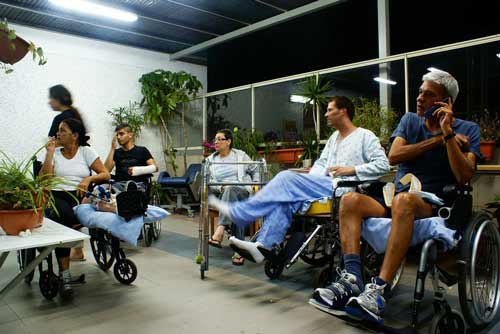DR BOET (N.F.) BURGER
Ginekoloog en Verloskundige
Gynaecologist and Obstetrician
** WE ARE RELOCATING END SEPTEMBER 2017**
190 Monument Road, Glen Marais, Kempton Park
Working Hours
Monday – Friday :
7.00am to 4.30pm
Saturday:
9.00am to 1.00pm
Sunday :
Closed
Contact Details
Address:
190 Monument Road, Glen Marais, Kempton Park, 1619
Tel:
(011) 979 0135; (011) 0213; (010) 534 6333
Email:
nfb@drnfburger.co.za
Latest News

Gynae-oncology
Case report: cervical tuberculosis diagnosed after treatment for cervical cancer Patricia Ann Factor, Jean Anne Toral and Sybil Lizanne Bravo University of the Philippines Manila, Manila, The Philippines Tuberculosis has been shown to coexist with malignancy, but tuberculosis and cancer in the cervix is extremely rare. This is the first case of cervical tuberculosis diagnosed in a cervical cancer patient who has undergone concurrent chemoradiotherapy and brachytherapy. This is the case of a 38 year old G2 P2 (2002) diagnosed with Squamous cell carcinoma, large cell non-keratinizing, Cervix, Stage IIIB. The patient underwent pelvic extended beam radiotheraphy from February 3 to March 19, 2015. Concurrently, she was given 6 cycles of chemotherapy with Cisplatin. Brachytherapy with 4000 centi Grays was given in March 27–29, 2015. On follow up one month after the last dose of brachytherapy, there was note of anodularity on the anterior lip of the cervix. A cervical punch biopsy was done which revealed: Chronic granulomatous inflammation with Langhan’s type multinucleated giant cells consistent with tuberculous infection. Negative for atypical/ malignant cells. This patient was started on Anti-Koch’s medication in the form of 2 months intensive treatment with Isoniazid, Rifampicin, Pyrazinamide, and Ethambutol, then 10 months of Isoniazid and Rifampicin. She was seen on the 6th month of treatment at the Out Patient Clinic, there was note of decrease in the size of the nodularity and the rest of the cervix was noted to be smooth. Her Pap Smear was negative for intraepithelial lesion. Cervical tuberculosis complicating cervical malignancy is curable with Anti-Koch’s therapy and has not been shown to adversely affect the course of the carcinoma.

Role of HPV DNA testing in modern gynaecological practice
he identification of some types of human papillomavirus (HPV) as necessary, but not sufficient, cause of cervical cancer has suggested the use of HPV testing in cervical cancer prevention. A large number of studies has provided evidence supporting its application (1) as primary screening test, (2) for triaging borderline cytology, (3) for follow-up after positive primary test but no abnormal histology and (4) as a test of cure. They also allowed a reasonably good definition of the appropriate policies and protocols, leading to the delivery of evidence-based guidelines resulting from a systematic review of the literature. In this chapter, we present a critical analysis of the recommendations of the main European and North American guidelines relative to industrialised countries.
http://www.sciencedirect.com/science/article/pii/S1521693417301190

Planned home birth
With increasing medical advances and the ability to rescue the mother and her baby, there has been a growth in the number of women who deliver in hospital facilities. This allows full care to be provided if required [1]. Maternal and perinatal mortality has fallen accordingly. This improvement in mother and baby outcomes has produced a conception of maternity safety in the developed world and a call for the return to home birth. This has concerned the obstetricians and particularly the paediatricians who feel that this produces unacceptable risk to the mother and her baby. However, evidence, mostly from Europe but some from the US, suggests that home birth can be relatively safe in the right circumstances. This needs a fully integrated comprehensive maternity care network that is supportive and responsive. The question is whether this should be supported to help improve the safety of home birth or resisted because home birth in many situations is inherently unsafe. http://www.sciencedirect.com/science/article/pii/S1521693417300901